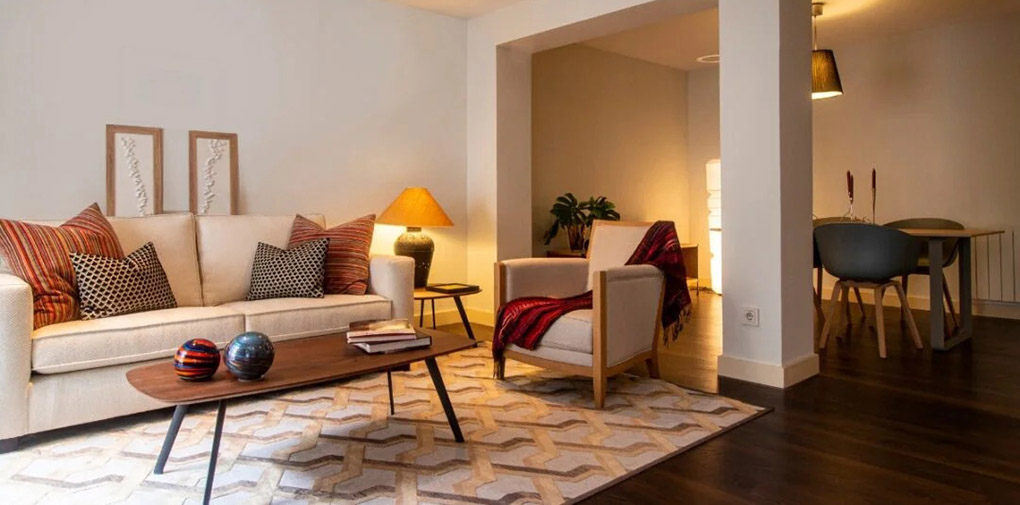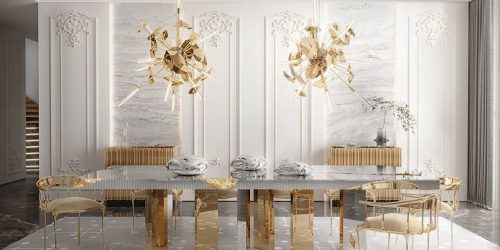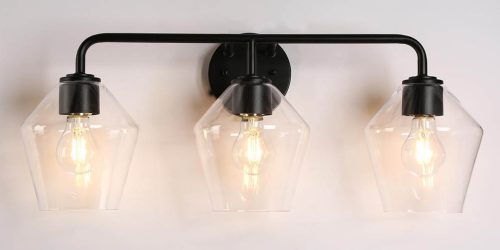Living Room Lighting Design Tips: How to Create Different Ambiances with Lighting
Lighting plays a crucial role in setting the mood of any room, and when it comes to the living room, it’s especially important. The living room is often the heart of a home, where you relax, entertain guests, or enjoy quality time with family. Therefore, getting the lighting just right can dramatically enhance your space. The right lighting can not only illuminate your space but also create distinct atmospheres for various activities and occasions.
We’ll explore different techniques for designing living room lighting that can create multiple ambiances. Whether you’re looking to achieve a cozy and intimate atmosphere for a movie night or a bright and lively vibe for social gatherings, the lighting in your living room is key.
1. Layer Your Lighting: Ambient, Task, and Accent
Effective living room lighting design often incorporates a combination of three types of lighting: ambient, task, and accent. Each serves a different purpose, and together, they can create a versatile lighting scheme for any occasion.
- Ambient Lighting: This is the primary source of light in your living room and provides overall illumination. It typically comes from overhead fixtures like chandeliers, pendant lights, or recessed lighting. Ambient lighting should be bright enough to light up the whole room evenly, but not so harsh that it creates discomfort.
- Task Lighting: As the name suggests, task lighting is intended to help with specific tasks. It includes things like reading lamps, floor lamps next to seating areas, or table lamps. Task lighting should be focused and bright enough to facilitate activities like reading, writing, or working.
- Accent Lighting: Accent lighting is used to highlight particular features of the room, such as artwork, plants, or architectural elements like a fireplace. Wall sconces, track lighting, or small spotlights are typically used for this purpose. Accent lighting should create contrast in the room and add visual interest.
By incorporating all three layers of lighting, you can easily adjust the light in your living room to match the activity or mood you wish to create.

2. Create a Cozy Ambience with Warm Lighting
If you’re aiming for a cozy and relaxed atmosphere, especially during colder months, warm lighting is essential. Warm tones, usually in the range of 2700K to 3000K, can make your living room feel inviting and comfortable.
To achieve this:
- Use Warm Bulbs: LED bulbs with a warm yellowish glow work best to create a soft, intimate atmosphere. Avoid cool-toned lighting as it tends to feel harsh and sterile.
- Incorporate Dimmers: Dimmer switches allow you to adjust the brightness of your lights depending on the mood. Dimming the lights in the evening creates a soft, calming effect perfect for winding down after a long day.
- Choose Soft, Indirect Lighting: For a softer ambiance, consider using floor lamps with fabric shades or table lamps with soft light filters. Avoid direct overhead lighting that might be too bright or stark.
Consider placing multiple small light sources throughout the room instead of relying on one large fixture. This will prevent harsh shadows and provide a balanced glow across the space.
3. Set the Mood for Entertainment with Layered Lighting
When you’re hosting guests or planning a movie night, the lighting in your living room should be adjustable to match the occasion. A layered approach to lighting is perfect for creating dynamic atmospheres.
- Dim the Overhead Lights: For a cinematic experience, consider dimming or turning off your main overhead lights and using task or accent lighting for a subtle glow. Pendant lights or track lighting can create a moody effect without drawing too much attention to the room’s ceiling.
- Introduce LED Strips: LED strip lights under your TV, behind furniture, or along the baseboards add a modern touch while helping to avoid overly bright lighting. They can be color-changing, allowing you to tailor the hue based on the event—whether it’s a party or a casual get-together.
- Accent Lighting for Focus: If you have a feature wall or artwork, use accent lighting like a spot lamp or picture light to draw attention. The soft pool of light will highlight the feature and contribute to the room’s overall ambiance.
For an entertainment-centric living room, ensuring that your lighting is versatile and adjustable is key to enhancing the overall experience.
4. Natural Light and Window Treatments
Natural light is a powerful element of any living room’s lighting design. It not only boosts the overall ambiance but also has positive effects on mood and well-being. To take full advantage of natural light:
- Maximize Windows: Keep window treatments light and minimal to let in as much natural light as possible. Consider sheer curtains or blinds that can be adjusted throughout the day.
- Use Reflective Surfaces: Incorporate mirrors or glass elements into your décor. These surfaces reflect natural light and help brighten up darker corners of the room.
However, too much sunlight can be a problem, especially during certain times of the day. To balance this:
- Install Adjustable Blinds or Shades: These can help you control the amount of light entering the room and prevent glare during the day. Roman shades or plantation shutters can add an element of style while also keeping the sunlight at bay.
By balancing natural light with artificial lighting, you can create a welcoming and dynamic living room that feels bright and airy during the day and cozy at night.

5. Use Lighting to Define Zones in Open Plan Living Rooms
In modern open-plan homes, living rooms are often part of a larger space that includes dining and kitchen areas. In such layouts, lighting can help delineate different zones and create a sense of separation.
- Use Ceiling Lights Strategically: Install separate lighting fixtures over the seating area and dining area to help define the space. A statement chandelier or pendant light over the coffee table can draw attention to the central seating area, while a series of smaller lights over the dining table can visually separate the two areas.
- Floor Lamps or Table Lamps: In addition to overhead lighting, use table lamps or floor lamps to create softer pools of light within specific sections of the room. This not only helps to define different zones but also adds a layer of warmth to the space.
- Track Lighting for Flexibility: Track lighting is highly versatile and can be adjusted to illuminate specific parts of the room. Use it to highlight areas such as reading corners, artwork, or architectural features without overpowering the rest of the space.
Lighting can be the key element that helps your open-plan living room feel organized, visually appealing, and comfortable.
6. Smart Lighting for Ultimate Control
Incorporating smart lighting into your living room is an excellent way to have complete control over your space’s ambiance. With smart bulbs, you can change the color and intensity of your lights via an app, voice assistant, or remote control.
- Customizable Color Temperature: Many smart bulbs allow you to adjust the color temperature, so you can easily switch between cool lighting for daytime productivity and warm lighting for a cozy evening atmosphere.
- Smart Dimmers: If you want to control the brightness without getting up from your seat, consider installing smart dimmers that work with your existing light fixtures. This allows you to adjust the lighting depending on the time of day or the occasion.
- Automated Lighting: Some smart lighting systems allow you to set schedules or use sensors to adjust the lighting based on time or activity, giving you more convenience and efficiency.
Smart lighting gives you the flexibility to experiment with different lighting setups, providing an easy way to change the ambiance of your living room at the touch of a button.
When designing your living room lighting, it’s essential to think about how you want the space to feel. From creating a cozy and intimate environment for relaxation to setting the mood for social events, lighting can completely transform the atmosphere of your living room. By layering different types of lighting—ambient, task, and accent—and combining natural light with artificial options, you can create a living room that is both functional and beautiful. Don’t forget the versatility of smart lighting, which can give you ultimate control over the ambiance of the room at all times. With these tips in mind, you’ll be able to craft a lighting design that suits every occasion and makes your living room a comfortable, inviting space for everyone.





